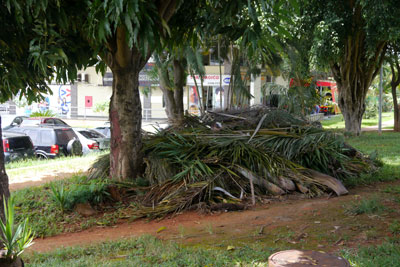MODERN LEAVES
The planned modern city of Brasilia attracted me since a long time. Her defined shape, location and function proceded her materialized presence. Brasilia arose out of an image, a sketch entailing three specifications of the city: structure, outline, alignment with the landscape.
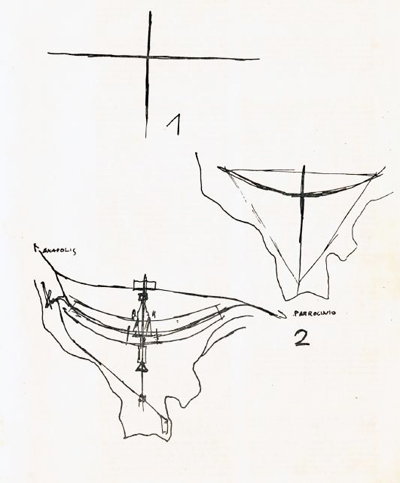
Master Plan Sketch, by Lúcio Costa, 1957, source Internet
The sketch, hence the city, was drafted by Lúcio Costa who won the competition for the building of the new capital of Brasil, launched by the then president Juscelino Kubitschek. Oscar Niemeyer was already defined as its architect. Within four years the city was erected. The project started by cutting down trees and plants in the defined location situated in the approximate centre of the vast country. A huge number of labourers and tons of steel and concrete were flown in. The city was built at maximum speed according to the detailed plan. In April 1960, Brasília was inaugurated, from then on superseding Rio de Janeiro as the capital of the country.
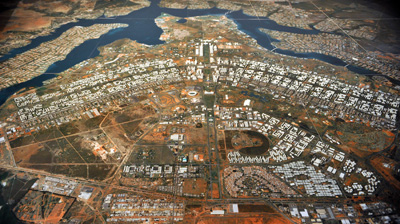
Brasília from above, source Internet
The shape of Brasília resembles a bird that spreads wings. The whole city is subdivided into sectors, each of them having its function for the life in this city. Along the monumental axis are the seat of government, the parliament, all offices of various ministries and embassies as well as the church, the theatre, the stadium, the concert hall and further public buildings. At the very end, a little north of the axis is the ministry of defence. The beginning of the northern and southern wings are reserved for hotels, the two wingtips provide each a sector with hospitals, in between residential areas.
These residential areas are divided into so called superquadras, consisting of residential blocks and courtyards. The planting in the courtyard complies with its planning by the landscape architect Roberto Burle Marx.
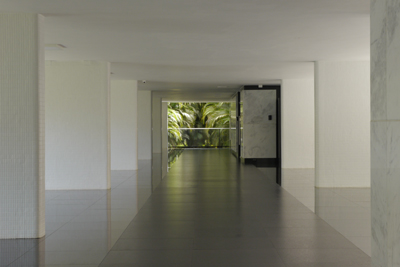
entrance area of a Superquadra (residential block)
The city demands to cover huge distances between living, working, running errands and leisure time activities. The distant different sectors are linked by the main roads W1, W2 and W3, which cross the wings. The cars leave these main roads via snail shaped exits leading to the residential and working sectors.
All these descriptions of the city can solely be made by looking at the plan, at the first sketches and at all the texts, which have been and are still written on Brasilia. Yet, I wanted to experience, what it is like to live in this planned city for a certain time.
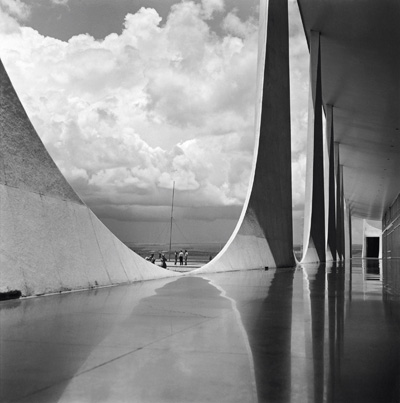
during the construction of Brasília, photo by Marcel Gautherot, source Internet
The first black and white photographic views of the construction of Brasília by Maurice Gautherot became part of the canonized memory and have shaped the ideas of this city. One knows its visual axis before one’s own arrival. Brasília was created by an image and since its construction it has been retransformed into thousands of images.
From the plane, the view of the city was disappointing: I knew it already. Only during the first ride which took me from the airport to my place of residence for the next 3 months, a certain disbelief occurred that this city really exists. The longer I drove along the already known buildings the more I started to spot views which I had not seen on images.
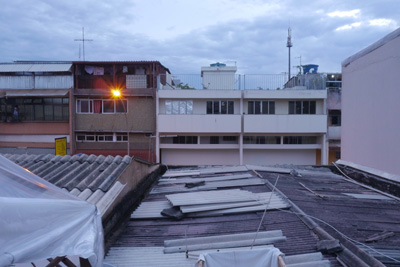
rooftop of exhibition space and residency place Elephante Centro cultural
I explored the city on foot, getting to know her planned structure and characteristics. From up close, the modern buildings are not in a good condition. Due to the hot and humid climate, the concrete is brittle, shows cracks and crumbles. Whereas the parks between the Superquadras flourish as planned and are well maintained. It is rather rare not to see someone collecting broken branches or pruning shrubs and bushes. Green waste is gathered and complied in big heaps along the roadside. Often they stay there for weeks before they get collected, bleaching out, turning brown and grey, blending into the urban fabric.
I took single palm leaves from these piles and used them as casting moulds. Nine sculptures made of concrete were created, which I initially presented in the exhibition space Elefante Centro Cultural in Brasília. In the course of the exhibition I placed one sculpture after the other in nine different realities of this planned city, which I got to know during long walks. One of my sculptures I released in the centre, on the Eixo Monumental, another one in front of the national theatre, one in an abandoned hotel squatted by homeless people, one in a huge rubber tree at the edge of the city, one in a bamboo next to the Cine Brasília, one in a shabby side street where prostitutes meet with clients, one opposite to an informal settlement of car mechanics, one on the green centre line of the W3 and one in the papyrus of the Praça dos Cristais opposite the ministry of defence.
I worked on MODERN LEAVES between February and April 2016 in Brasília, making, exhibiting and releasing the sculptures. Most likely still today these nine concrete sculptures are part of this remote modern city.
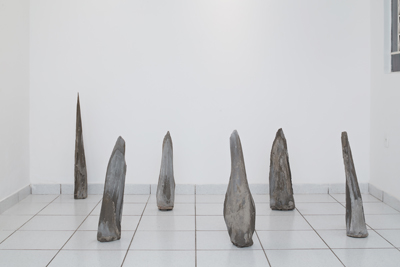
Modern Leaves, exhibition view
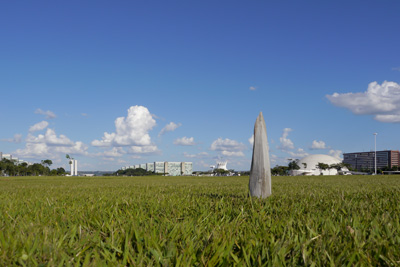
MODERN LEAVES_ one placed at Eixo Monumental
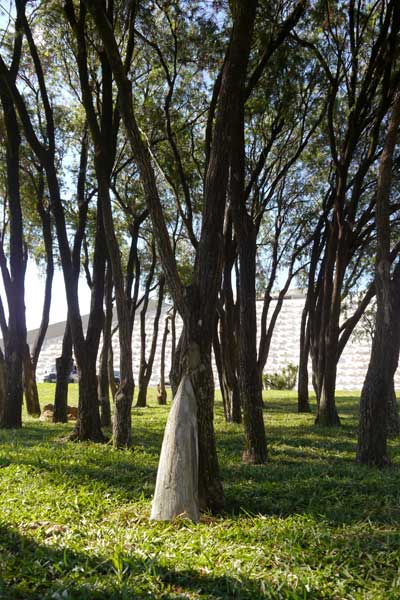
MODERN LEAVES_ one placed in front of Teatero Nacional
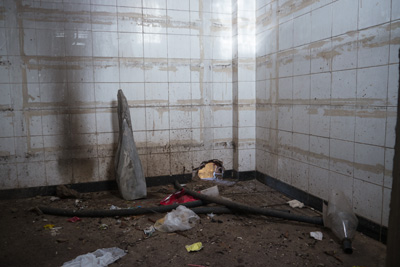
MODERN LEAVES_ one placed in a squatted hotel
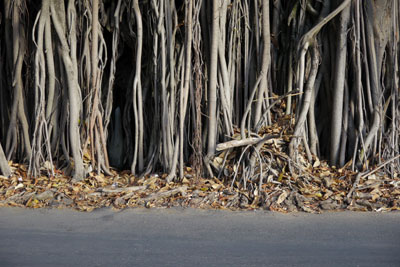
MODERN LEAVES_ one placed in a rubber tree
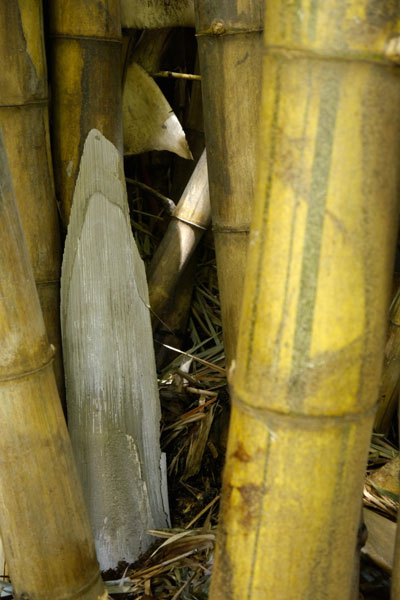
MODERN LEAVES_ one placed in bamboo next to Ciné Brasília
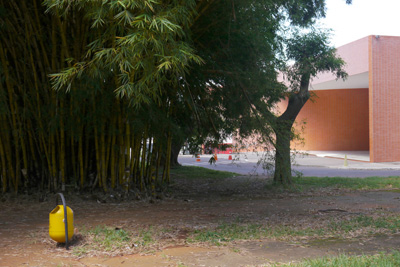
the bamboo in front of Ciné Brasília
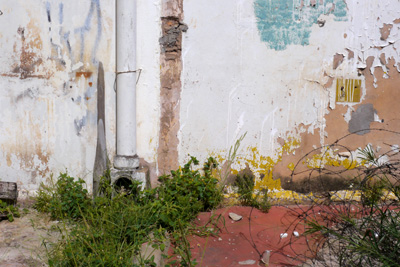
MODERN LEAVES_ one placed in a shabby side street
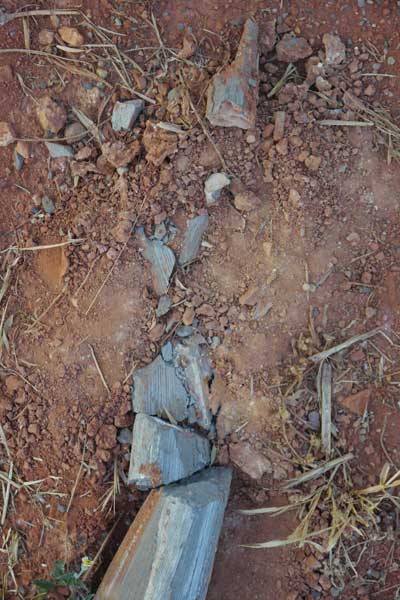
MODERN LEAVES_ one placed opposite an informal settlement of car mechanics
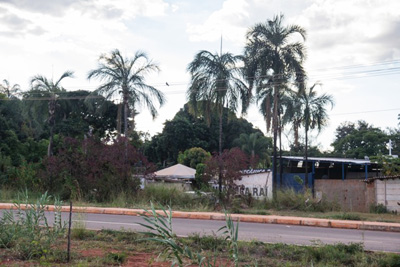
view onto the informal settlement of car mechanics
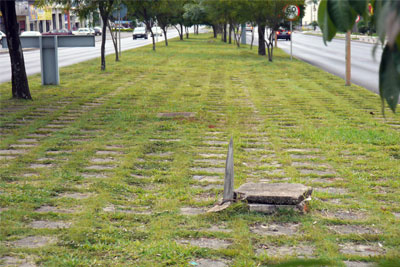
MODERN LEAVES_ one placed at the green centre line of the W3
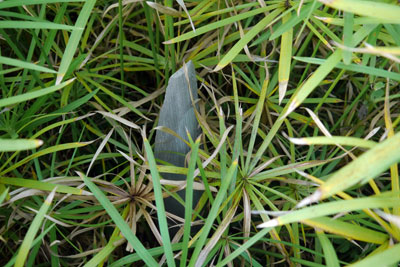
MODERN LEAVES_ one placed in the papyrus of Praça dos Cristais opposite the ministry of defence
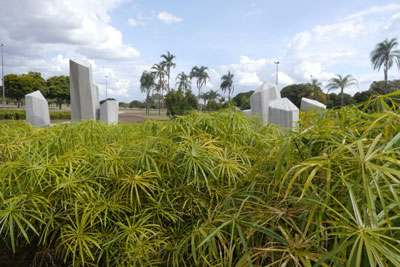
MODERN LEAVES at Praça dos Cristais
MODERN LEAVES by Sarah Burger 2016
images, if not mentioned otherwise, and text by Sarah Burger
RELATED WEB SITE
→ artist’s website
[ Arab Army ]
[ Coincidental Destinies ]
• MODERN LEAVES •
[ Moving on – Moving back – Moving on ]
[ On images, voices and information – a media approach to the Egyptian revolution ]
[ Setting ]
[ Tahrir Square: Social Media, Public Space ]
[ Tank Man Tango ]
[ War Tourist ]
FEATURED THEME ON CITY SHARING
by ASUNCION MOLINOS GORDO
-
This project is an instrument for common critical analysis to help understand the reasons behind Egyptians’ diminishing …
by INAS HALABI
-
The project Letters to Fritz and Paul focuses on the expeditions of the Swiss cousins, lovers and scientists, Fritz and …
by SARAH BURGER
-
The planned modern city of Brasilia attracted me since a long time. Her defined shape, location and function proceded he …
by ADRIEN GUILLET
-
Youri Telliug talks with the artist Adrien Guillet about his project Citracit
Youri Telliug - What is Citracit …
by NIGIST GOYTOM
-
In 2013 more than 45 million people have been forced to leave their homes. This amounts to the biggest number of refugees …
by SULAFA HIJAZI
-
The on going debate on Arab identity and its (cultural) representation is strongly shaped by Edward Saidʼs formative …
by ASUNCION MOLINOS GORDO
-
WAM is a site-specific work that uses the historical trope of the cabinet of curiosities to explore the introduction of …
MORE CONTRIBUTIONS BY THE FOLLOWING
